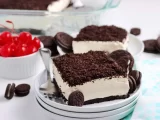The Magic of Macarons – A Guide to France’s Favorite Dessert
September 5, 2024Made with marzipan, macarons are meringue-style pastries with a crunchy exterior and a chewy interior, and with their so-called ‘crown’ or ‘foot’, they are light and sweet gifts. Most of them have a ganache filling too.
If your macarons are cracking or not developing the signature foot (the indention around the bottom of the macaron), you might want to look at the batter. By practicing macaronage, you’ll figure out the right consistency so your batter doesn’t ooze like lava!
ORIGIN
The macaron’s perfect round shape is key, and it achieved by piping batter on to parchment paper templates. Skilled bakers would pipe the batter freehand, usually when preparing for bulk orders. But a piping tip with the right size opening, coupled with templates, helps macarons achieved uniformity of shape and size. Theories have been wrangling for decades over how the modern macaron first came to be. Catherine de Medici has been credited with bringing them from Italy to France when she wed Henri II in 1535. Sometimes, the cookies appear to be descended from the Italian Pignoli cookies, or possibly from more traditionally French macaroons, like the old-world kind made in nun bakeries. Marguerite Gaillot and Marie Morlot, two Carmelite nuns who fled their convent at the height of the French Revolution to seek asylum in Nancy, where they commercialized the macarons by baking and selling it as the ‘Macaron Sisters’.
HISTORY
Macarons have spent hundreds of years in an evolutionary culinary tradition, adaptation, and culinary talent. Macaron, not to be confused with its coconut-flavoured cousin macaroon (mah-roon), is the modern French variety of this delicacy, perfected by decades of French pastry chefs experimenting with how to create the ultimate cookie. Though it is hard to say exactly where and when those sweets first found their way to France, many credit the recipe to Italian Queen Catherine de Medici, who brought the recipe with her to marry the king Henry II in 1533. Renaissance French writer Francois Rabelais also referenced a similar dessert in the 16th century in one of his books. But the modern macaron is usually two almond biscuits sandwiching a rich cream or chocolate filling in between, crunchy rough shells and velvety smooth.
RECIPE
Macarons consist of a mixture of almond paste made with ground almonds, egg whites and sugar, which, once made are piped into small rounds on to a baking sheet and left to cool. If they are left for long enough, a skin will form before the macaron is joined with the filling and it is served on its own or as part of a dessert buffet. The macarons must be perfectly round with flattened tops and ruffled edges; they must be dry; the filling should be not be too thick, otherwise the meringue will melt inside, and once made they need to be put carefully in an airtight box, which will keep it for a number of days.
VARIATIONS
When it comes to macarons, they should be light, lacy, and incredibly airy. The outer shell should be crisp and crunchy. The centres must torched and chewy. Upon first glance, it must have a visual impact. To check if your shells will end up with the right texture and just the right amount of wrinkliness, you need to form peaks in your batter: the batter should be thick, but not runny. Macarons come in many varieties; sweet or savory are equally welcome. Fauchon chefs have even created macarons with unique features, like delicate rose ganache filling elegant pastel shells or rich eggnog buttercream for a festive feel.
PRESENTATION
A perfectly formed macaron is an object of beauty. For the ideal macaron, its meringue should be firm with visible feet when removed from its baking sheet. Fillings should be spread thin enough so that when biting into a macaron, they don’t produce an overwhelming blob of filling. Ideally, fillings should have a smooth texture similar to ganache while being moist but not sticky. Macarons make a sophisticated and elegant addition to a dessert table and make for a wonderful gift, too! If you wish to add sparkle, sprinkle some sanding sugar (ideally using crystals large enough to adhere that do not melt; by doing this only minutes before serving, you’ll catch the light and from a distance they will simply look extra shiny and eye catching!)



